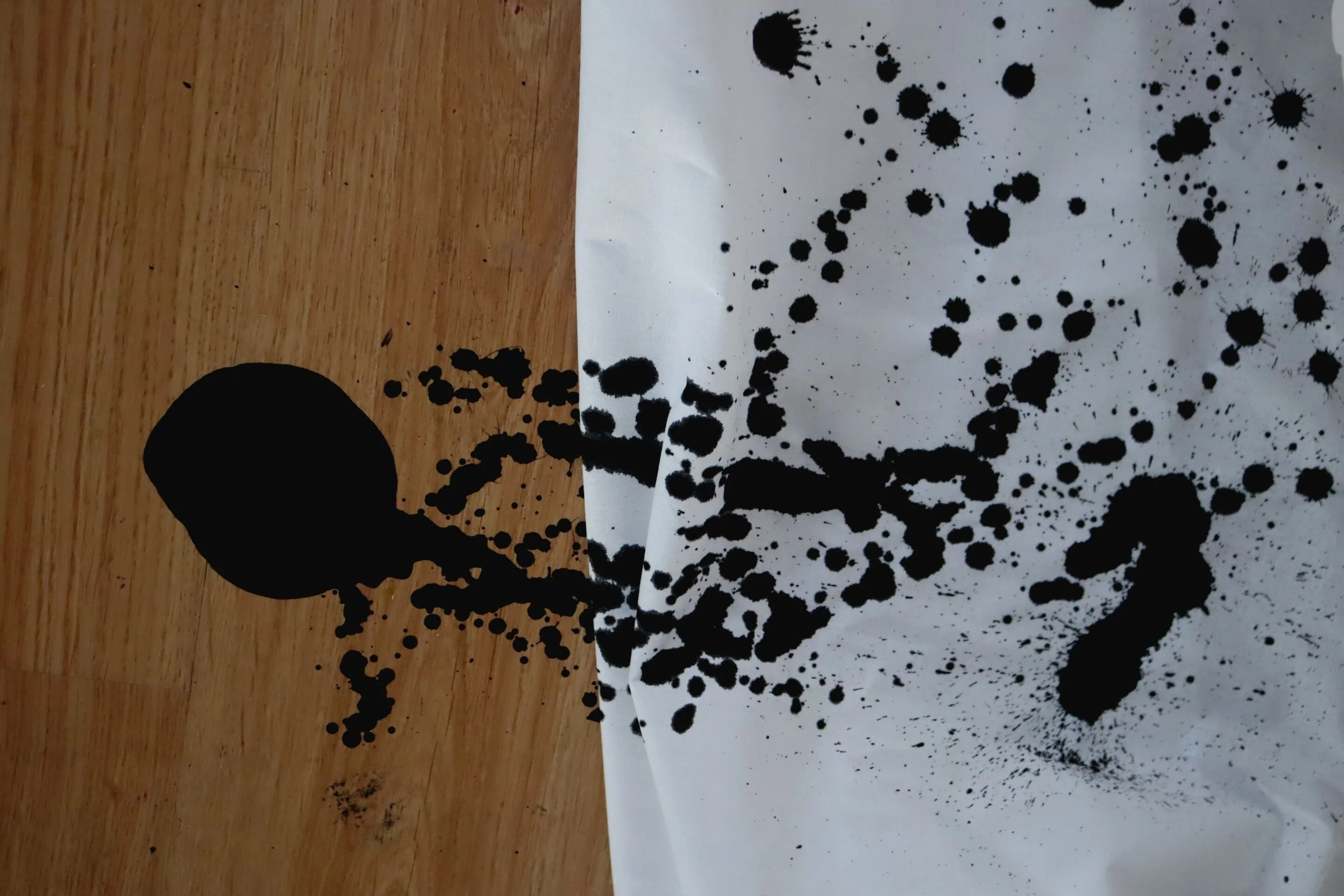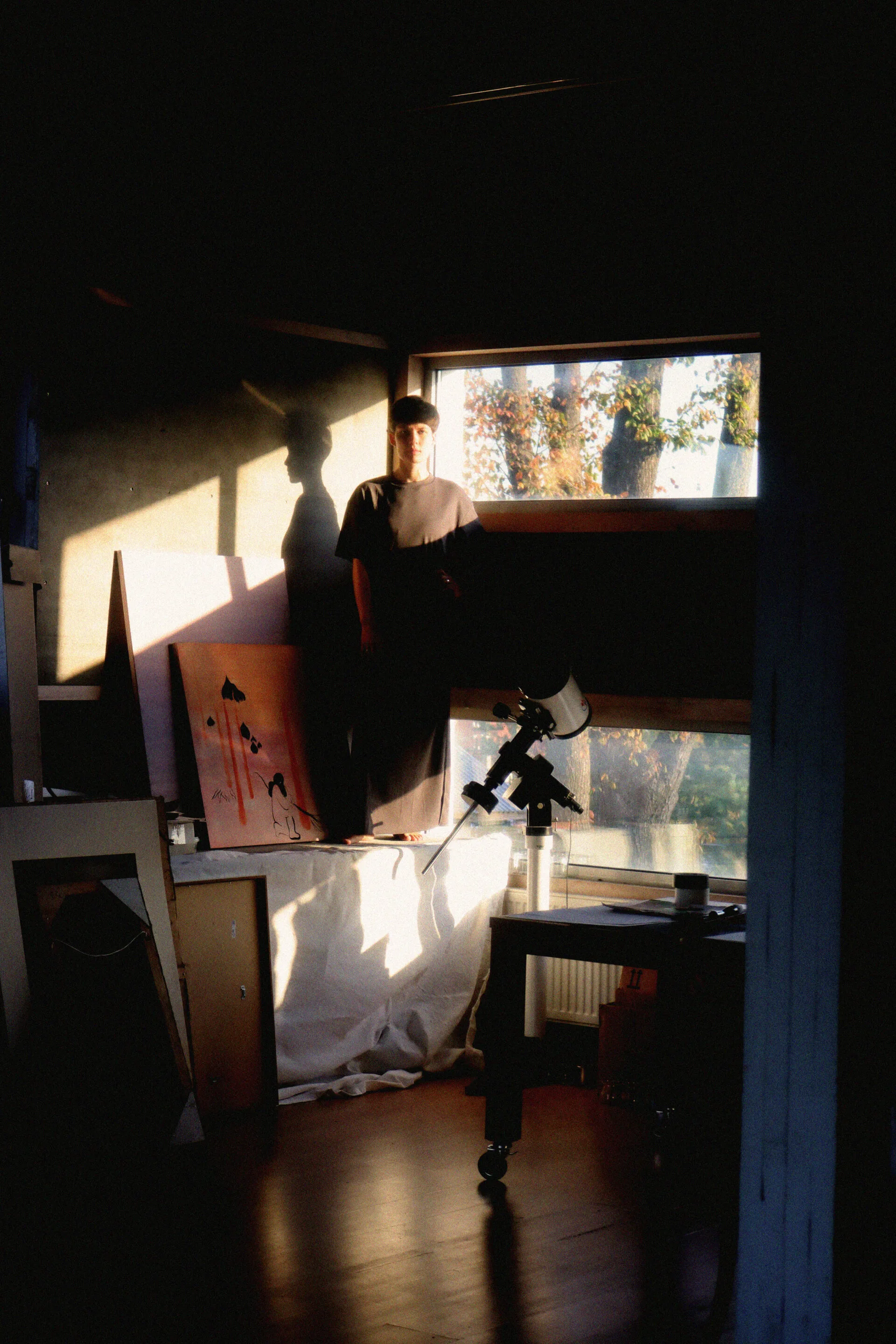
ART
Art and Atmosphere: Liza Artamonova on Designing Spaces of Emotion on Paper
Provided by
Liza Artamonova
Location
Gridchinhall
Writer
Yana Karnaukhova
Art is not just something to look at, but also something to live, feel and experience. For Liza Artamonova, this philosophy is the driving force of the creative process. In this interview, we talked about such things as inspiration, the search for your own style, reflection on external circumstances and future plans.
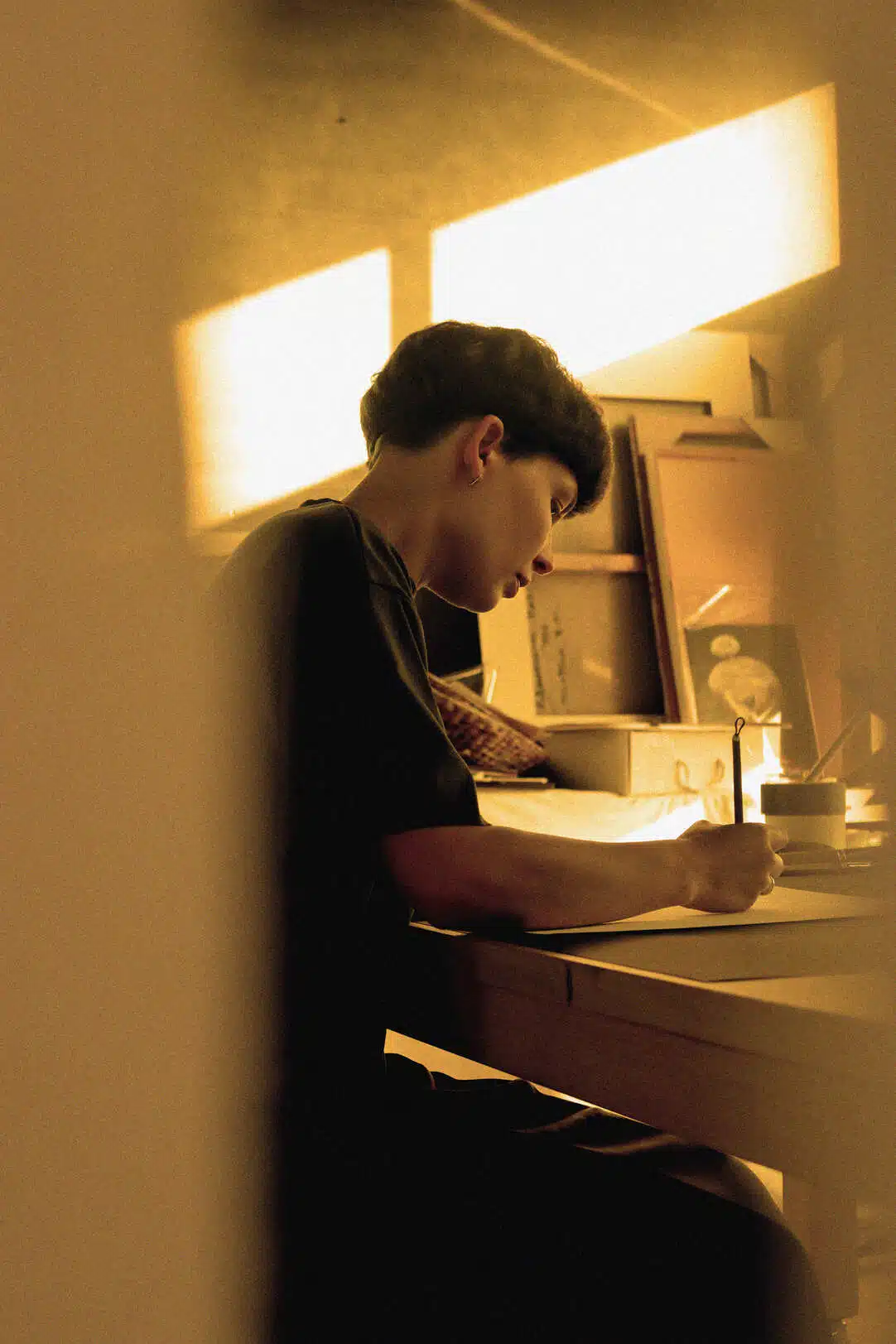
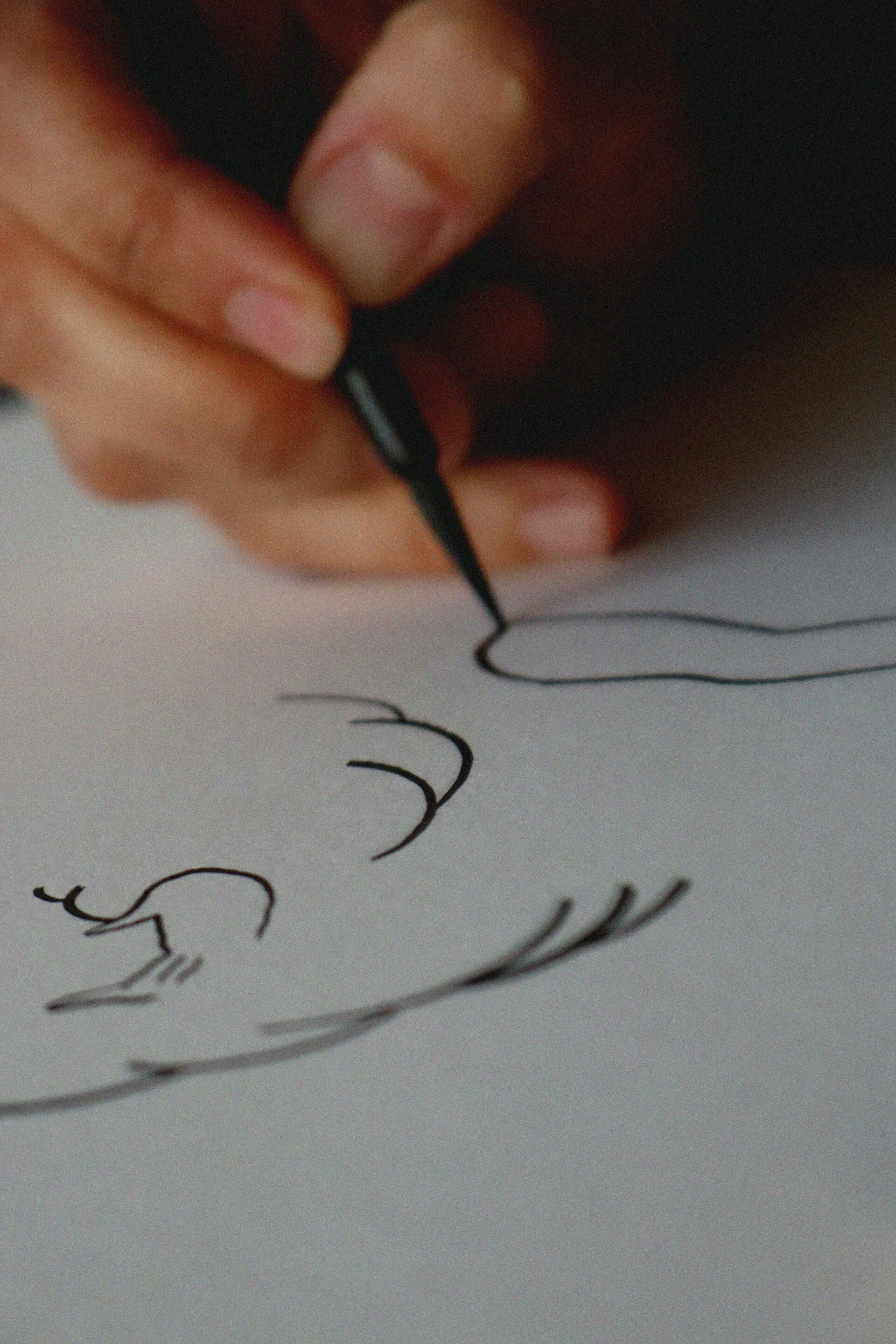
Yana Karnaukhova: Liza, could you tell us about the beginning of your career as an artist? What initially sparked your interest in this form of self-expression, and how did you carve your path in the art world?
Liza Artamonova: The beginning of my career can be traced back to a suggestion I made to my mother—to walk naked through the streets of our neighborhood. I thought about how beautiful she would look on a sunny street, framed by green trees with leaves swaying in the warm breeze, and how the passersby would be surprised and amazed. This idea came to me after spending hours poring over modernist art albums. I was around five years old.
The practice of artistic creation allows for magic to be introduced into the everyday, creating new situations and alternative spaces. What fascinates me is the manifestation of worlds that didn’t exist before. Being in the system of art feels like a magnetic pull, one impossible to resist; perhaps this attraction shapes the path.
YK: When you reflect on your creative journey, can you identify who or what has influenced your approach to graphic art? How have these influences shaped your artistic identity?
LA: I believe that fragments of actions or principles have remained from every artistic experience or creative-reflective process I’ve experimented with.
For instance, during my studies at the Polytechnic Institute, I began to treat a book as a carefully constructed architectural structure. You can see a book as a cathedral. The relationships between all elements and details are crucial. The color white holds a sacred meaning; its silhouette, form, and rhythm, which are created through thoughtful work with typesetting elements and illustration, are all important. White is air. White is the space left for the viewer to enter inside (the page).
When I stand before a blank sheet, I see the white color as an infinite space for immersion, with countless worlds and situations emerging from its fluid changes.
YK: Your method of creating graphic art without preliminary sketches or drawings suggests a unique creative process. Could you share more about how this approach has evolved over time?
LA: Looking back, I see that my approach developed alongside my reflection on it. For a while, I saw a connection between my process and the automatic writing of the Surrealists, but I realized that labeling this method doesn’t fully decode what I do.
Mentally, this method evolved from intuitive drawing in collaboration with the unconscious into a performative act, where the lines and silhouettes of stains left on the paper become a fixation of the act itself. It’s like creating a Chinese calligraphic composition, where every trace of the brush on the surface holds sacred meaning. The actions and control over the artist’s body must be impeccable and refined. I see a connection between this approach and what I do, except I don’t always know exactly what will appear on the sheet.
Lately, I’ve noticed that my method resembles Hayao Miyazaki’s approach—capturing flashes of insight, which only over time, as they intertwine, form a complete story. Perhaps an art historian would classify this approach as a postmodern method.
“Immersing myself in someone else’s high-quality work, like that of Tarkovsky, can also help.”
YK: Working directly with the sheet and interacting with the unconscious seems to give your art a meditative quality. How do you cultivate this state of mind during the creative process?
LA: The state of mind is best maintained and deepened if thorough preparatory work has been done. Any state has a cumulative effect, meaning the number of hours spent in it. When it comes to the depth and quality of immersion, they depend on following certain rules and controlling the various processes happening in life. Being an artist is like being a monk. You need resilience when facing temptations, such as consuming draining content, and you must take care of your body and mind while supporting your path with works that embody spirit.
The studio or residency is like a monk’s cell, an ideal space with minimal distractions. Currently, my workspace is wherever I am physically, often in conditions with limited time for working.
So, to trigger the necessary state of mind, tuning must be efficient. A good walk or classical music helps, especially in cloudy weather with soft light. Immersing myself in someone else’s high-quality work, like that of Tarkovsky, can also help. Even small fragments of such artists’ work have the power to take you to a certain depth. Their energy is so concentrated and spiritually developed that it activates everything around their works, as if peeling back a layer to reveal truth.

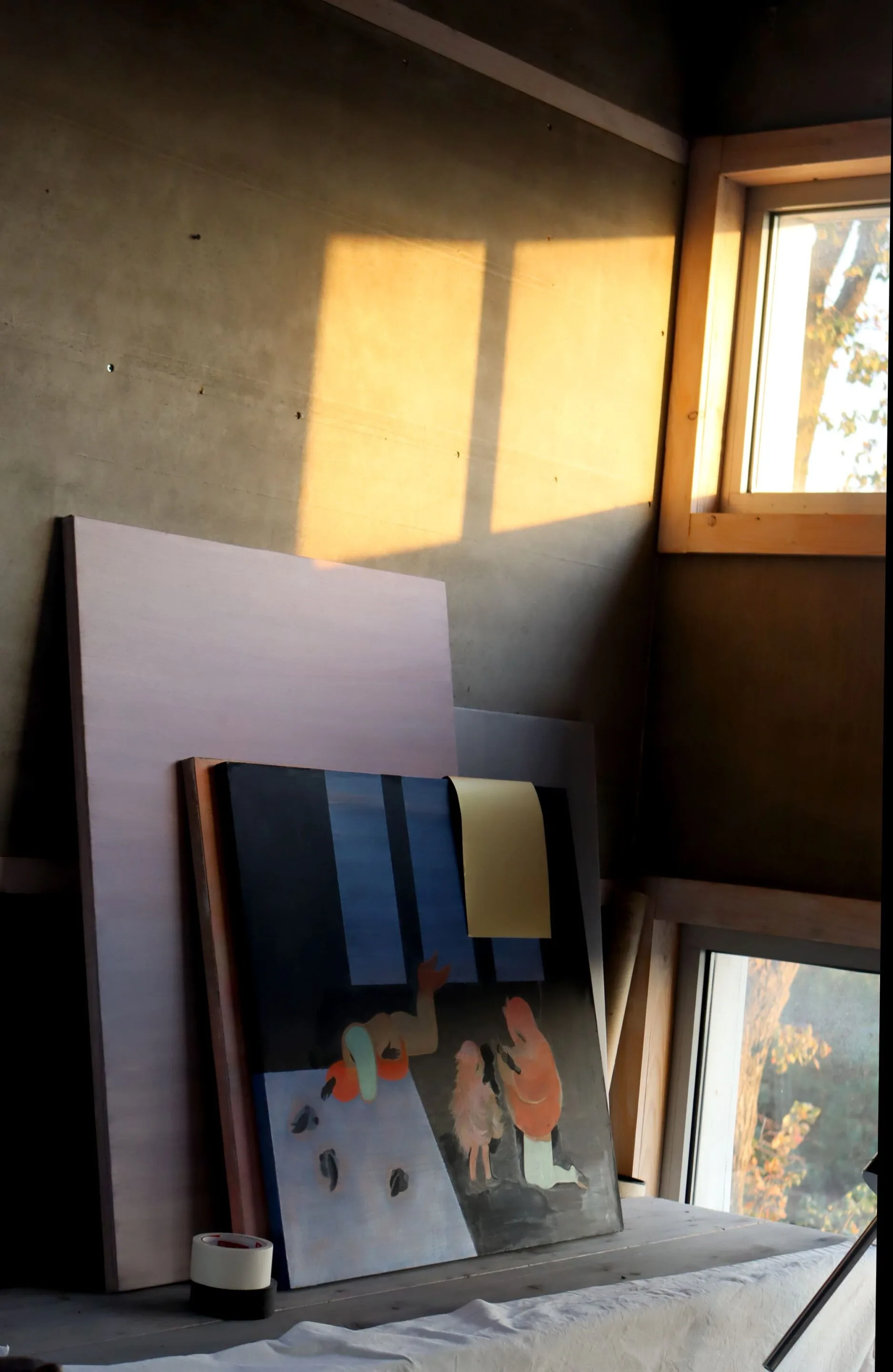
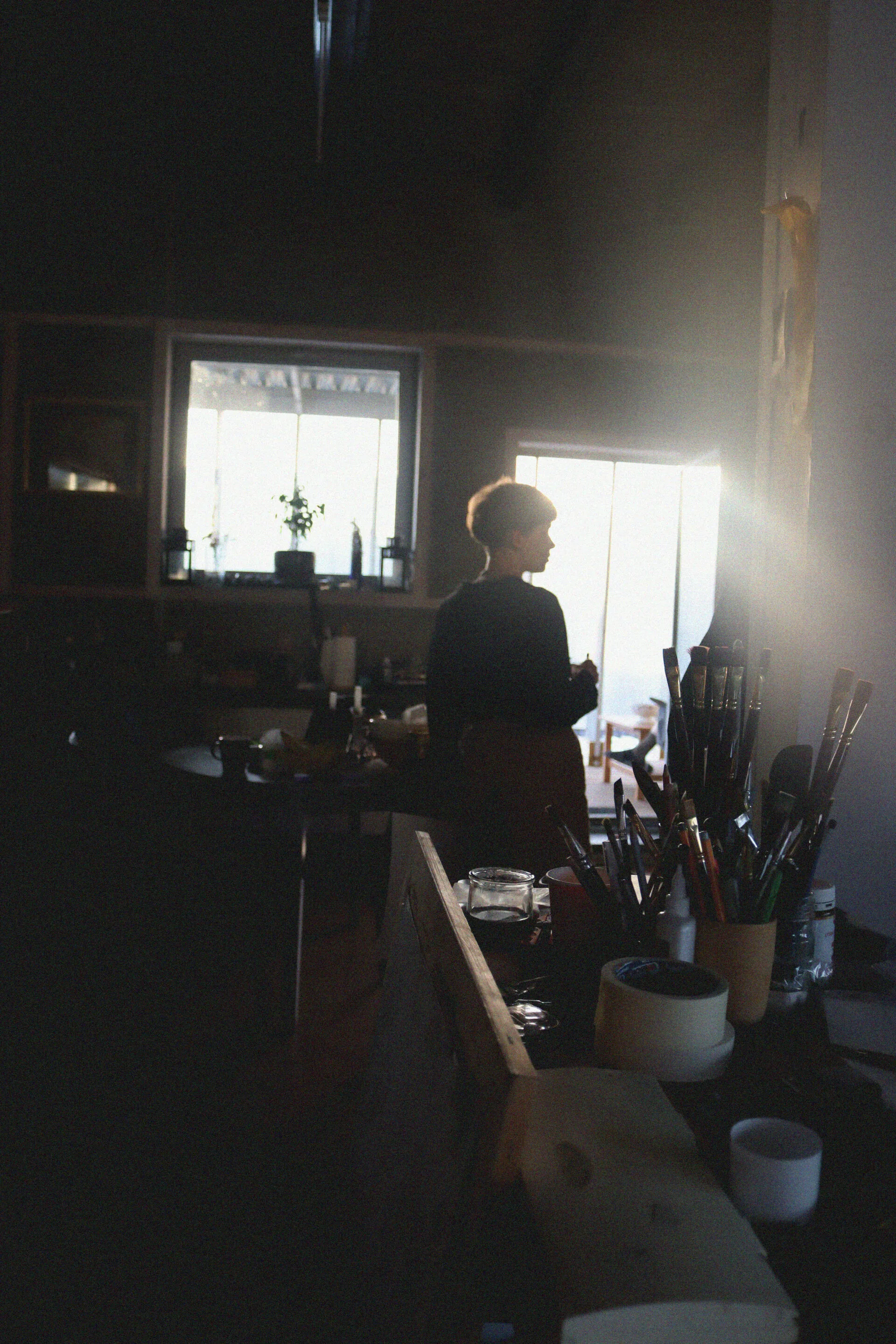
YK: Culture often serves as a source of inspiration for artists. Has any specific cultural experience or tradition influenced your perception of art, and if so, how does it manifest in the imagery you depict in your works?
LA: In the worlds I create on paper, not only human-like creatures are animated, but also the things that surround them.
This connects slightly with the Shinto idea of animating natural objects and phenomena, which I resonate with, as well as paganism—acknowledging the presence of energy in various forms.
As for specific cultural experiences, I recall my first physical encounter and interaction with Yayoi Kusama’s works at a large exhibition of hers in Madrid’s modern art museum about ten years ago. I remember being struck by the sense that the spaces and objects she created were alive. It seemed like they were breathing, moving, and communicating with each other, as though their inner essence was coming to the surface. This was my personal interpretation of what I saw, unrelated to the artist’s psychological state.
In my own works, I bring in the idea of spirit inhabiting objects. Balloons or large sculptures on paper are alive. They may have faces or body parts, or they might mimic inanimate forms. But in these spaces, everything has its own breath, though it may not always be obvious.
YK: Your art evokes a sense of self-analysis and exploration. Could you elaborate on how your personal experiences and inner journey influence the imagery and symbolism present in your creations?
LA: Every journey usually starts with some kind of situation, backstory, or conflict that sets the trajectory. The impulse behind my artistic actions is something I’ve identified through observing myself and my fellow artists—a unique calibration of perception, an ability and function to notice discrepancies, layers, and hidden connections in the things you encounter. Then, these findings are filtered through my reflection, assembling new configurations that build an alternative reality, perspective, or idea.
Since the task of self-observation is also part of my personal duties as an artist, my emotional and intellectual experiences directly affect the work and what emerges in them. Components blend together, and that’s when the magic of creating something new happens, brought into reality through the artist.
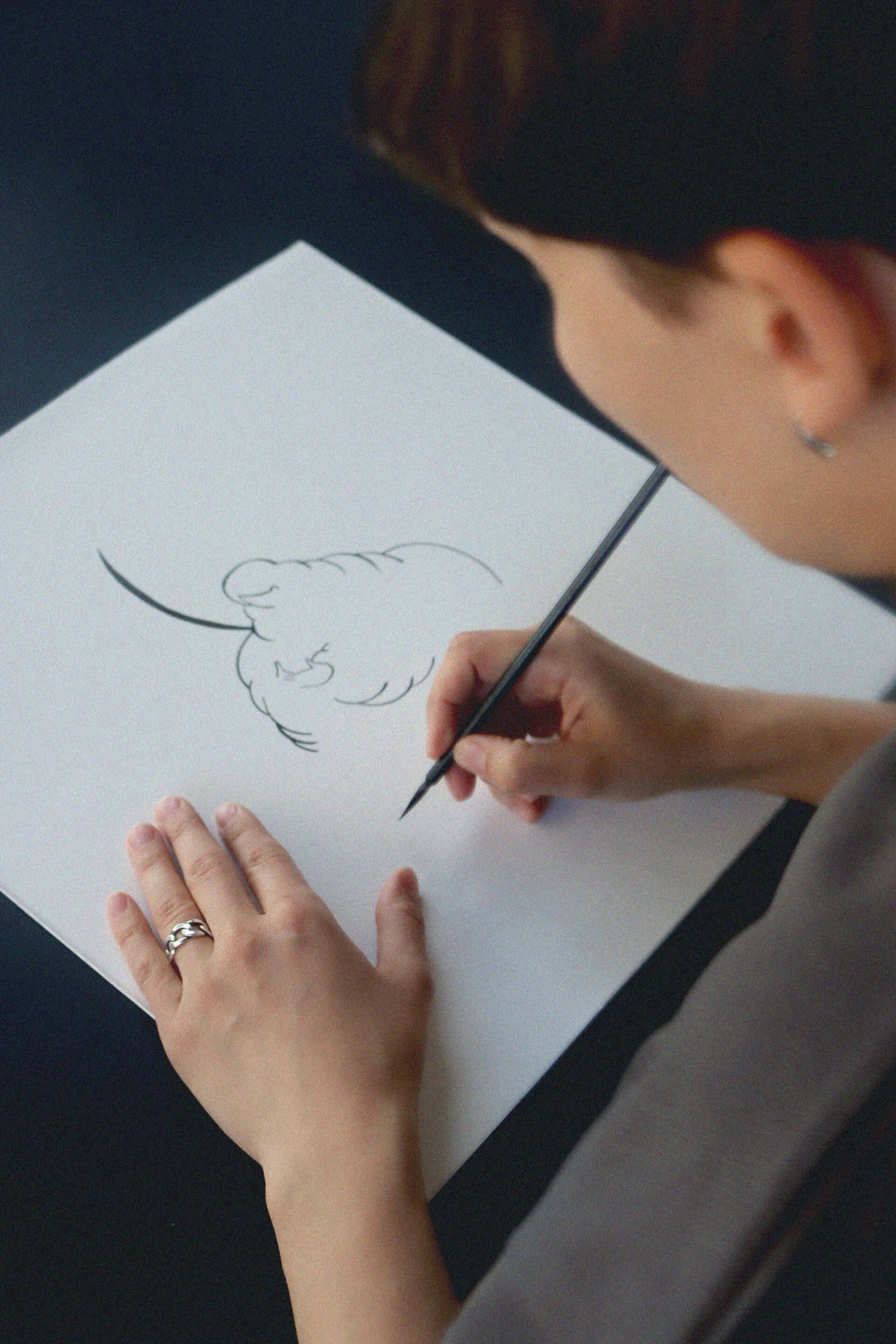
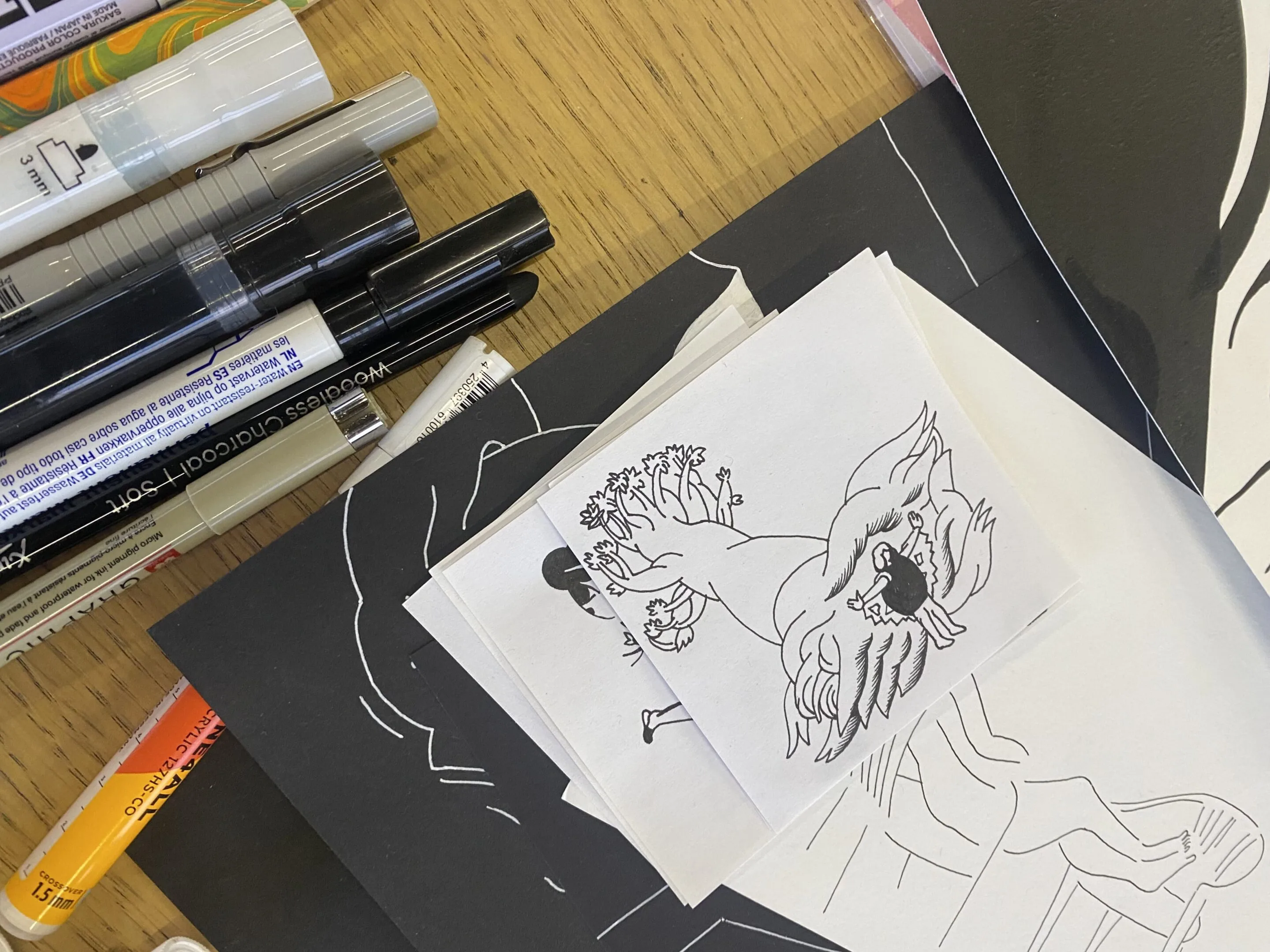
“Thin paper is like crystal or ice—you have to handle it with extreme care and attention, and be mindful of storing it safely.”
YK: Materials play a crucial role in realizing artistic vision. Could you tell us about the materials you prefer to work with and how they help achieve the desired texture, depth, and visual effect in your works?
LA: My preference for materials and tools is closely linked to my mood and overall state. For instance, brushes often have a rebellious character and don’t fully follow the hand’s movement, but they can cover a large area. So, when I want to switch to a larger format, I turn to them and accept their conditions for work.
Gel pens, on the other hand, struggle with larger spaces but offer consistent thickness and controlled lines, and their ink absorbs beautifully into thin paper. The thinner the paper, the closer the bond between it and the ink, but its fragility is also its charm. Thin paper is like crystal or ice—you have to handle it with extreme care and attention, and be mindful of storing it safely.
Canvas with oil paints, however, doesn’t have such issues due to its durability. In the past, I ignored this aspect of materials, but recently, it’s been attracting me more. In the world of forms and objects, you could think of a work on paper as a ceramic piece, and a canvas as a stone sculpture. And stones live and store information for a long time.
YK: The small format of your works seems to be a deliberate choice. What prompted you to adopt this scale, and how does it affect the viewer’s perception and interaction with your art?
LA: Miniature formats are similar to a journey through an illustrated book, where the reader places their trust in the author and, entering the story, becomes part of the unfolding narrative.
The format is born from a combination of factors—overcast weather, enveloping twilight, and small formats paired with gel pens create a space for intimate expression. The tool, invented for writing, offers a sense of maximum concentration and attention to the fine lines of ink marks that alter the sheet’s space. These conditions invite the viewer to interact with equal attentiveness, encouraging them to pause and read the message.
YK: Looking ahead, how do you envision the future of your artistic practice? Are there any new techniques, themes, or projects you would like to explore in your future work?
LA: Each creative experience has its own aspects that attract me. Small formats offer an intimate dialogue with the viewer, while large-scale projects that engage space have the potential to become immersive installations, transporting the audience to another dimension. Lines drawn on a wall interact with different layers of perception compared to those on paper, and they require the artist to involve the entire body, almost like a dance.
With this in mind, I am considering fresco murals and large ceramic tiles that form cohesive images. I also envision large canvases that have the power to change the mood and atmosphere of the spaces they inhabit.
As for specific projects I’d like to realize, one of my dreams is to create immersive room environments for guests at a small hotel, ideally located in an unexpected setting, surrounded by mountains. I imagine designing each room so that the traveling visitors can experience a unique world and atmosphere. I’m particularly drawn to residential spaces where people spend a lot of time, as art in these environments can evoke surprising sensations and transform the experiences of those inside. When I talk about creating works specifically for each room, I don’t limit myself to flat images but include artifacts and objects that should work together in harmony. This project of my dreams could be described as a total installation in a non-institutional space.
If I were to return to smaller formats, I would love to release an artist’s book in a limited edition of about 100 copies. I’m also interested in collaborating with local factories with long-standing traditions, particularly those specializing in utilitarian items, such as porcelain products.
The idea of creating worlds in different places without sacrificing quality or falling into mainstream trends sounds inspiring and somewhat utopian—a worthy challenge.
